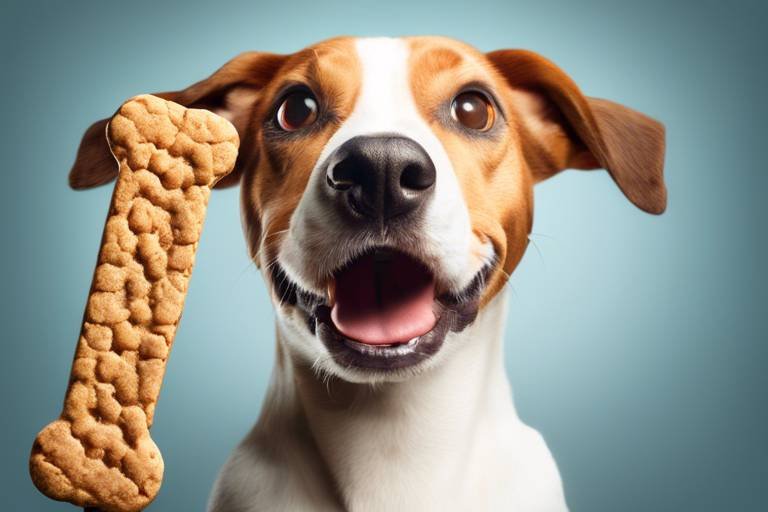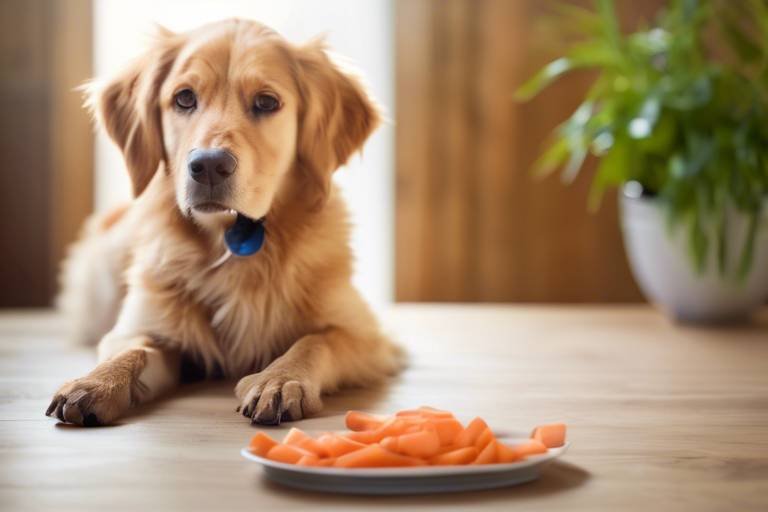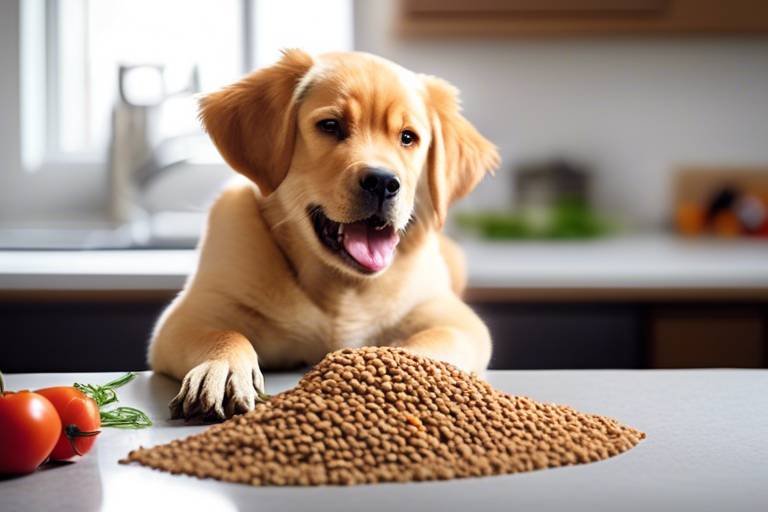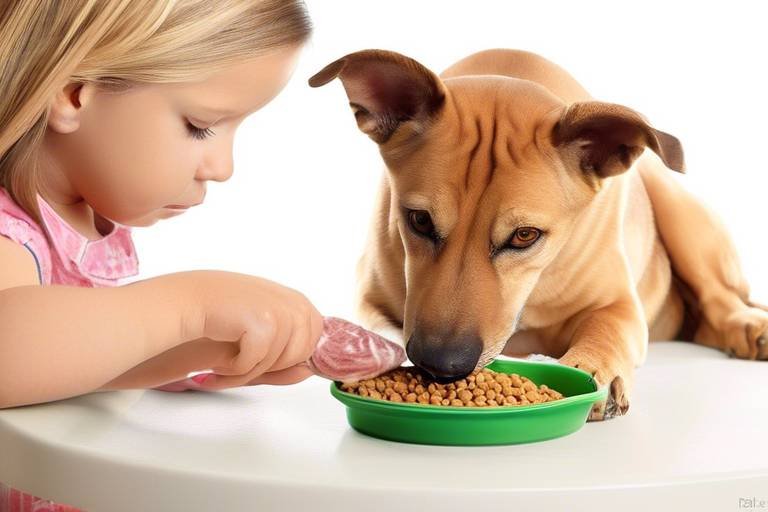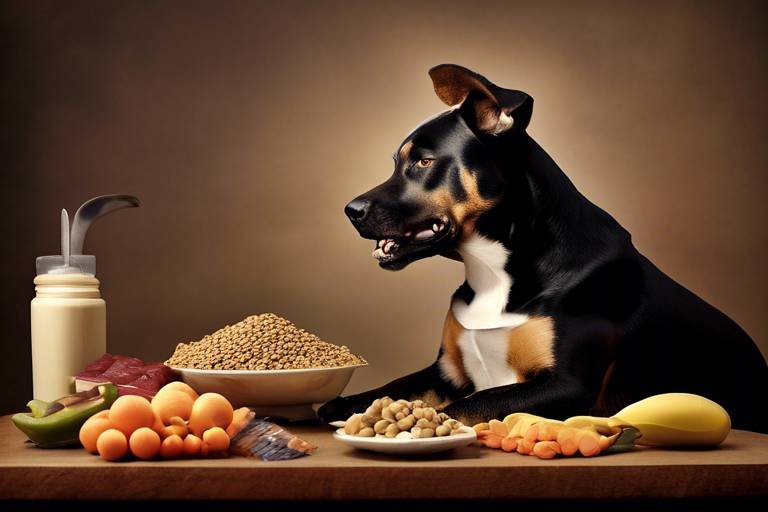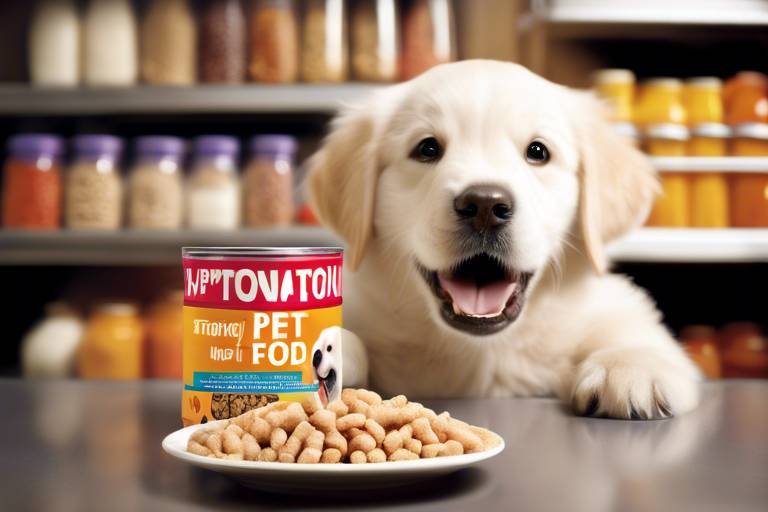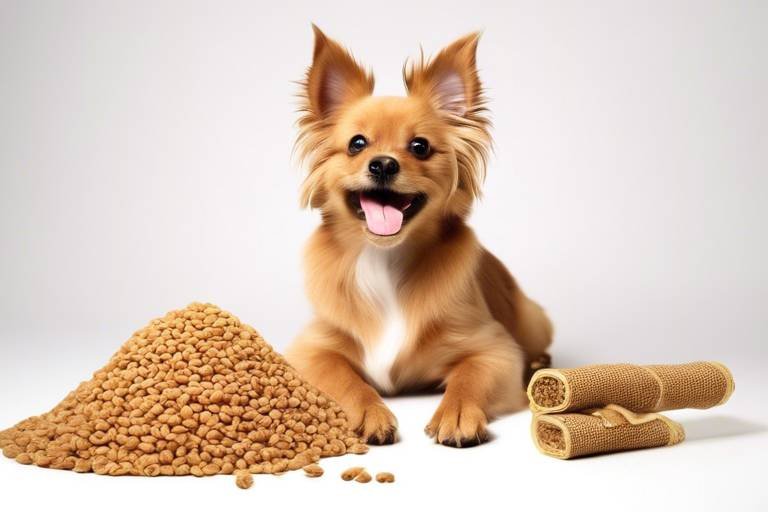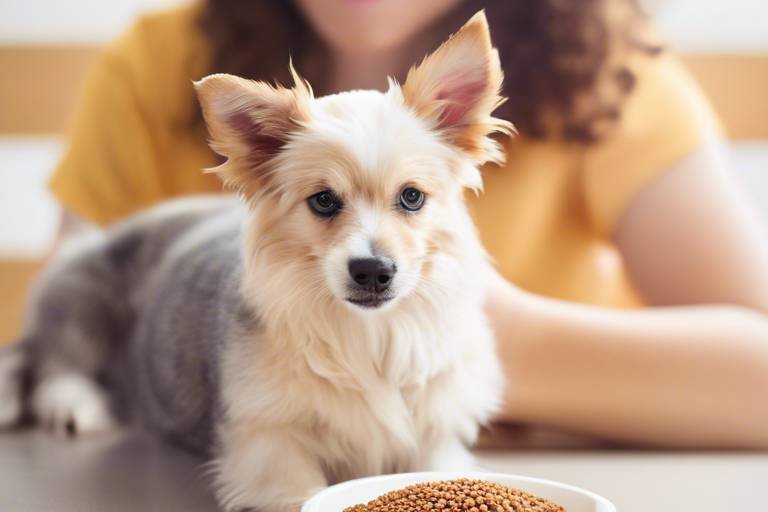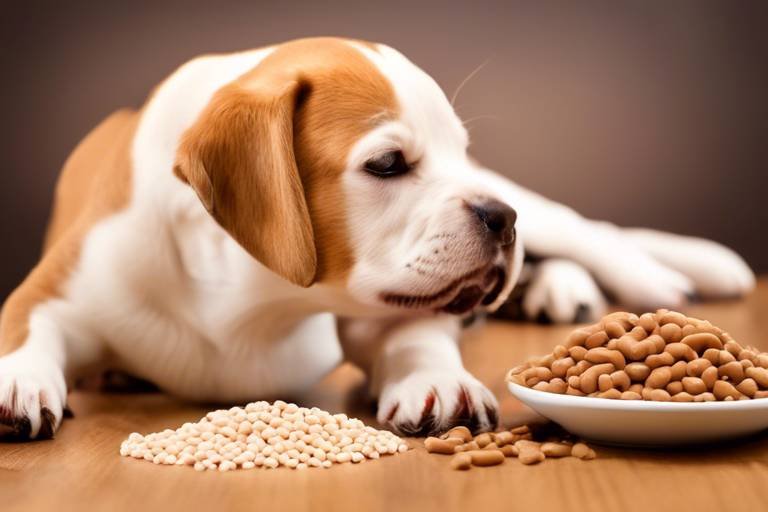How to Create a Feeding Schedule for Your Pet
Establishing a feeding schedule for your pet is essential for their health and well-being. Just like us, our furry friends thrive on routine and consistency. A well-structured feeding schedule not only helps in maintaining their weight but also plays a crucial role in their overall health. Imagine trying to function without a set meal time; it would be chaotic, right? Pets are no different. So, let's dive into the various factors you need to consider when designing an effective feeding routine that will keep your pet happy and healthy.
Different pets have unique dietary requirements based on their age, breed, and health. For instance, a growing puppy has different needs compared to a senior dog. Understanding these needs is crucial for creating a balanced feeding schedule that promotes optimal health. Think of it like tailoring a suit; it needs to fit just right! Factors to consider include:
- Age: Puppies require more frequent meals than adult dogs.
- Breed: Larger breeds may need different portion sizes compared to smaller breeds.
- Health conditions: Pets with specific health issues may require special diets.
Selecting the appropriate food for your pet is vital. With so many options available, it can feel overwhelming. This section will cover various types of pet food, including dry, wet, and raw options. Each type has its benefits and drawbacks. For example, dry food is often more convenient and can help with dental health, while wet food can be more palatable and hydrating. You need to choose what fits best for your pet's lifestyle and preferences.
Deciding between commercial pet food and homemade diets can be challenging. Both options have their pros and cons, and it’s essential to weigh them carefully. Commercial pet foods are formulated to meet specific nutritional standards, ensuring that your pet gets a balanced diet. However, homemade diets can offer more control over ingredients and cater to specific dietary needs. Here’s a quick comparison:
| Aspect | Commercial Pet Food | Homemade Diets |
|---|---|---|
| Nutritional Balance | Formulated for balanced nutrition | Requires careful planning |
| Convenience | Ready to serve | Time-consuming to prepare |
| Ingredient Control | Less control over ingredients | Full control over what goes in |
Commercial pet foods are convenient and consistent in providing balanced nutrition for your pet. They are designed to meet the specific dietary needs of different breeds and life stages. This means you don’t have to worry about whether your pet is getting enough vitamins and minerals; it’s all taken care of for you!
On the other hand, homemade diets can be beneficial for pets with allergies or specific health concerns. By preparing meals at home, you can ensure that your pet is eating high-quality ingredients without any fillers or preservatives. However, it’s essential to consult with a veterinarian or a pet nutritionist to ensure you’re meeting all of your pet’s dietary needs.
Calculating the right portion sizes is essential for maintaining your pet's health. Overfeeding can lead to obesity, while underfeeding can leave your pet malnourished. A good rule of thumb is to measure food accurately based on your pet’s weight and activity level. For example, a more active dog will require more food than a couch potato. Always refer to the feeding guidelines on your pet food packaging, but don’t hesitate to adjust based on your pet's individual needs.
Consistency is key when it comes to feeding your pet. Establishing a regular feeding schedule helps regulate your pet’s digestive system and can even prevent behavioral issues related to food anxiety. Aim for the same times each day, and try to stick to that schedule as closely as possible. This routine will help your pet feel secure and relaxed.
Understanding how often to feed your pet is crucial. Puppies may need to eat three to four times a day, while adult dogs typically do well with two meals a day. Cats, on the other hand, often thrive on multiple small meals throughout the day. Tailoring the feeding frequency to your pet's specific needs can help them thrive.
Flexibility in your pet's feeding schedule is sometimes necessary. If your pet becomes more active or if you notice weight gain or loss, it might be time to adjust their feeding routine. Regularly assess their health and behavior to ensure that your feeding schedule remains effective.
Keeping an eye on your pet's health is essential once the feeding schedule is established. Regular check-ups with the vet can help you catch any potential issues early. Additionally, be on the lookout for signs that indicate whether the feeding routine is effective.
Maintaining a healthy weight is vital for your pet's overall well-being. Regularly monitor their weight and adjust their food intake as necessary. Incorporating exercise into their daily routine is equally important. Think of it as a two-part dance: diet and exercise must work together to keep your pet in shape!
Being aware of potential dietary issues is crucial for your pet's health. Common signs of food allergies or intolerances include itching, vomiting, or changes in stool. If you notice any unusual behaviors or symptoms, consult your veterinarian immediately to address these concerns effectively.
Q: How often should I feed my pet?
A: The feeding frequency depends on your pet's age, size, and health. Puppies may need three to four meals a day, while adult dogs typically do well with two meals.
Q: Can I switch my pet's food abruptly?
A: It's best to transition to a new food gradually over a week or so to prevent digestive upset.
Q: How can I tell if my pet is overweight?
A: If you can’t feel your pet’s ribs easily or if they have a noticeable belly, they may be overweight. Consult your vet for a proper assessment.
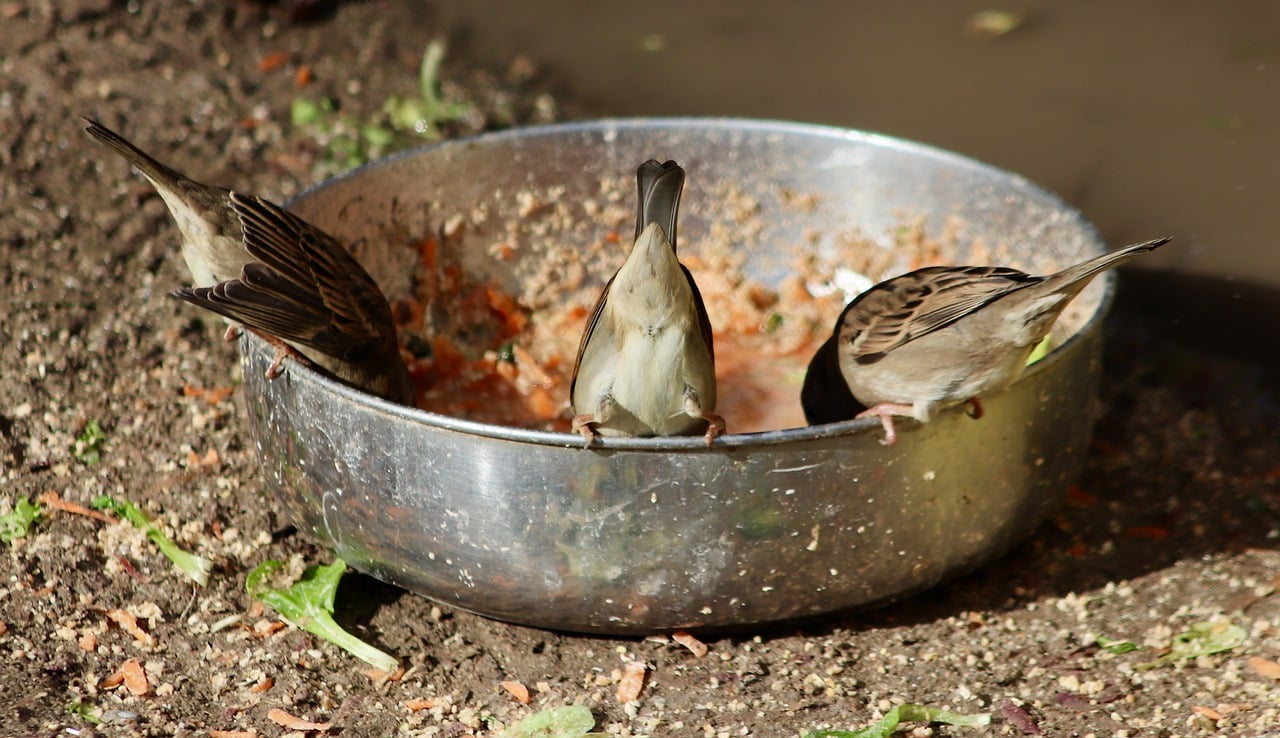
Understanding Your Pet's Nutritional Needs
When it comes to our furry friends, one size does not fit all. Just like humans, pets have unique nutritional requirements that vary based on several factors, including their age, breed, and overall health. Understanding these needs is crucial for creating a balanced feeding schedule that not only promotes optimal health but also enhances their quality of life.
For instance, a growing puppy has different dietary needs compared to a senior dog. Puppies require higher levels of protein and calories to support their rapid growth, while senior pets may need fewer calories and more fiber to maintain a healthy weight. Similarly, certain breeds may have predispositions to specific health issues, making it essential to tailor their diet accordingly.
To help you navigate this complex landscape, consider the following aspects when assessing your pet's nutritional needs:
- Age: Puppies, adults, and seniors all have distinct dietary requirements.
- Breed: Different breeds may have varying nutritional needs due to size and health predispositions.
- Health Conditions: Pets with specific health issues may require specialized diets.
Moreover, it’s essential to consult with your veterinarian to determine the best dietary plan for your pet. They can provide insights tailored to your pet's specific needs, helping you choose the right food and ensuring that your furry friend receives all the necessary nutrients. A well-rounded diet will typically include a mix of proteins, carbohydrates, fats, vitamins, and minerals, each playing a vital role in your pet's overall health.
As you design a feeding schedule, keep in mind that hydration is just as important as nutrition. Always ensure your pet has access to fresh, clean water, as it aids digestion and helps prevent various health issues. Monitoring your pet's response to their diet is also crucial; look for signs of healthy energy levels, a shiny coat, and a happy demeanor. If you notice any changes, such as weight loss, lethargy, or digestive issues, it may be time to reassess their nutritional intake.
In summary, understanding your pet's nutritional needs is not just about choosing the right food; it’s about creating a comprehensive feeding strategy that considers their unique characteristics and lifestyle. This approach will go a long way in ensuring that your beloved companion remains healthy, happy, and full of life.
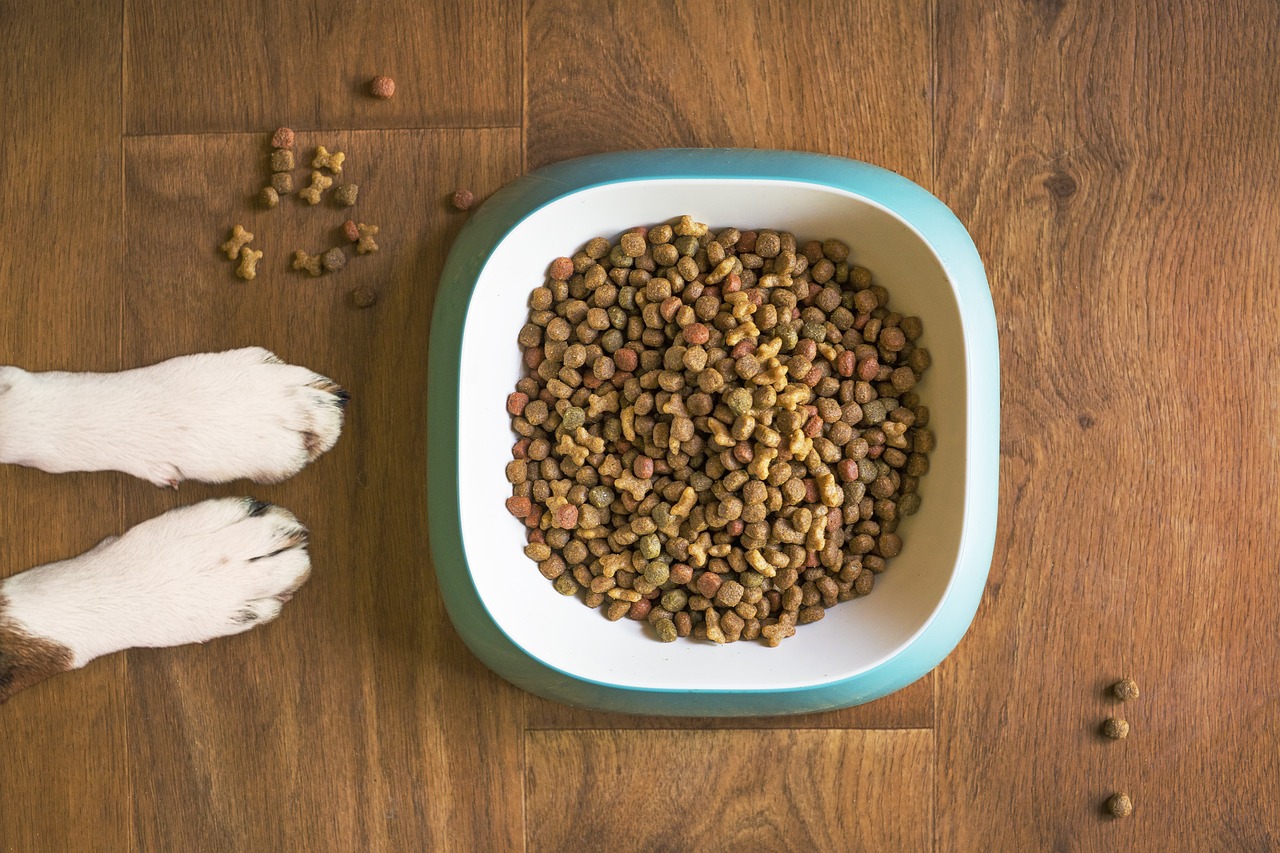
Choosing the Right Type of Food
When it comes to feeding your furry friend, is like picking the perfect outfit for a special occasion—it needs to fit just right! Not all pet foods are created equal, and understanding the differences between them is essential for your pet's health and happiness. There are three main types of pet food: dry food, wet food, and raw food. Each has its own set of benefits and considerations, so let’s dive in and see what suits your pet best.
Dry food, often referred to as kibble, is a popular choice for many pet owners due to its convenience and shelf stability. It’s easy to store, doesn’t require refrigeration, and can help keep your pet's teeth clean. However, it’s essential to choose a high-quality brand that lists meat as the first ingredient and is free from fillers and artificial preservatives. Some pets may not drink enough water when consuming dry food, so it's crucial to ensure they have access to fresh water at all times.
On the other hand, wet food can be a delightful treat for your pet! It’s often more palatable and can be beneficial for pets that need to increase their moisture intake. Wet food is typically higher in protein and lower in carbohydrates, which is great for pets with specific dietary needs. However, it does have a shorter shelf life and can be more expensive than dry food. Plus, it’s essential to clean your pet’s bowl regularly to avoid any bacterial growth.
Now, let’s talk about raw food. This option has gained popularity in recent years, as many pet owners believe it mimics a natural diet. Raw diets can include raw meat, bones, fruits, and vegetables. However, they require careful handling to avoid contamination and must be well-balanced to ensure your pet gets all the necessary nutrients. It’s important to consult with a veterinarian before switching to a raw diet to avoid any potential health risks.
To help you make an informed decision, here’s a quick comparison of the three types of pet food:
| Type of Food | Pros | Cons |
|---|---|---|
| Dry Food |
|
|
| Wet Food |
|
|
| Raw Food |
|
|
In conclusion, the best type of food for your pet depends on their individual needs, preferences, and any specific health concerns they may have. Always consult with your veterinarian to determine the most suitable option that will keep your pet happy and healthy. Remember, a well-fed pet is a happy pet!
1. How do I know if my pet is allergic to their food?
If you notice symptoms like itching, digestive upset, or ear infections, it might be time to consult your vet about potential food allergies.
2. Can I mix different types of food?
Yes, many pet owners choose to mix dry and wet food for added variety and nutrition, but always ensure the total diet remains balanced.
3. How often should I change my pet's food?
It's usually best to stick with one type of food unless your vet recommends a change. Sudden changes can upset your pet's stomach.
Commercial vs. Homemade Diets
When it comes to feeding your furry friend, the choice between commercial and homemade diets can feel like standing at a crossroads. Each path has its own set of advantages and challenges, and understanding these can help you make the best decision for your pet's health and happiness. Let's dive into the nitty-gritty of both options to see which one might suit your lifestyle and your pet's needs better.
Starting with commercial pet food, this option is designed by experts who formulate recipes to meet specific nutritional standards. These foods often come in various forms, including dry kibble, wet canned food, and even freeze-dried options. The biggest advantage here is convenience. You can easily grab a bag or can from the store, and you don't have to worry about preparing meals from scratch. Plus, commercial foods are designed to provide balanced nutrition, which means your pet is likely to get all the essential vitamins and minerals they need.
However, it's essential to choose high-quality brands that use real ingredients and avoid fillers. Some commercial foods may contain artificial additives or low-quality ingredients that can be detrimental to your pet's health. So, while the convenience factor is a huge plus, make sure you're doing your research to find the best options available.
On the flip side, we have homemade diets. Preparing meals for your pet at home can be a rewarding experience, allowing you to have complete control over what goes into their food. You can tailor meals to meet specific dietary needs, especially if your pet has allergies or sensitivities. This flexibility can be particularly beneficial for pets with unique health concerns.
However, cooking for your pet isn't without its challenges. It requires time, effort, and a solid understanding of your pet's nutritional requirements to ensure that their diet is balanced. If you’re considering this route, it’s crucial to consult with a veterinarian or a pet nutritionist to develop a meal plan that meets all of your pet's needs.
| Aspect | Commercial Diets | Homemade Diets |
|---|---|---|
| Convenience | Easy to obtain and serve | Time-consuming to prepare |
| Nutritional Balance | Formulated by experts | Requires careful planning |
| Ingredient Control | Limited control over ingredients | Full control over ingredients |
| Cost | Varies widely | Can be more expensive |
In conclusion, the choice between commercial and homemade diets really depends on your lifestyle, your pet's health, and your willingness to invest time in meal preparation. Both options have their pros and cons, so weigh them carefully. Whatever path you choose, your ultimate goal should be to provide your pet with a nutritionally balanced diet that supports their health and well-being.
- Can I mix commercial and homemade diets? Yes, many pet owners choose to combine both options. Just ensure that the overall diet remains balanced.
- How do I know if my pet is getting enough nutrients? Regular check-ups with your veterinarian can help monitor your pet’s health and nutritional status.
- Is it safe to feed my pet human food? Some human foods are safe for pets, while others can be harmful. Always check with your vet before introducing new foods.
Benefits of Commercial Pet Food
When it comes to choosing the right nutrition for your furry friend, commercial pet food often stands out as a convenient and reliable option. One of the primary benefits is the formulation of these products. Commercial pet foods are crafted to meet specific nutritional standards, which means they provide a balanced diet tailored to your pet's needs. This is especially important for busy pet owners who may not have the time or expertise to prepare homemade meals that meet all of their pet's dietary requirements.
Another significant advantage is the consistency in quality and nutrition. Unlike homemade diets, which can vary significantly based on the ingredients you have on hand, commercial pet foods undergo rigorous testing and regulation to ensure they deliver the same level of nutrients in every bag or can. This consistency helps to maintain your pet's health over time, as their diet remains stable.
Moreover, commercial pet foods are often enriched with essential vitamins and minerals that might be challenging to incorporate into a homemade diet. These nutrients play a vital role in supporting your pet's immune system, promoting healthy skin and coat, and ensuring optimal organ function. For instance, many brands include omega fatty acids, antioxidants, and probiotics that help improve digestion and overall well-being.
Let's not forget about convenience. With commercial pet food, you can easily find options that cater to various dietary needs, including weight management, allergies, and specific health conditions. This means that whether your pet needs a grain-free diet or a formula designed for senior dogs, you can find a product that fits their unique requirements without the hassle of meal planning and preparation.
Additionally, commercial pet foods come in a variety of forms—dry kibble, wet food, and even freeze-dried options—allowing you to choose what works best for your pet's preferences and lifestyle. Many pets enjoy the taste and texture of commercial food, making mealtime a more enjoyable experience for both you and your pet.
In summary, while homemade diets certainly have their place, commercial pet foods offer numerous benefits that make them an attractive option for many pet owners. They provide balanced nutrition, consistent quality, essential nutrients, convenience, and variety. Ultimately, the choice between commercial and homemade diets should be based on your pet's specific needs, your lifestyle, and your ability to provide a balanced and nutritious diet.
- Is commercial pet food safe for my pet?
Yes, commercial pet food is regulated and must meet specific safety standards. Always check for quality brands and consult your veterinarian if you have concerns. - Can I mix commercial pet food with homemade meals?
Yes, you can mix the two, but it's essential to ensure that the overall diet remains balanced. Consult with a vet for the best approach. - How do I choose the right commercial pet food?
Look for foods that meet AAFCO (Association of American Feed Control Officials) standards, and consider your pet's age, breed, and health needs when selecting a product.
Advantages of Homemade Diets
When it comes to feeding your furry friend, homemade diets can offer a world of advantages that commercial pet foods simply can't match. One of the most significant benefits is the control over ingredients. With a homemade diet, you can choose exactly what goes into your pet's meals, ensuring that they receive the freshest and most nutritious options. This control is especially crucial for pets with specific dietary needs or allergies, as you can tailor their meals to avoid any harmful ingredients.
Another advantage is the transparency that comes with preparing your pet's food at home. You can rest assured that your pet is consuming high-quality ingredients, free from fillers and artificial preservatives often found in commercial products. For instance, while many commercial foods may include by-products or vague terms like "meat meal," a homemade diet allows you to select whole foods, such as lean meats, vegetables, and grains, ensuring a more wholesome meal.
Moreover, homemade diets can be more cost-effective in the long run. While the initial investment in quality ingredients might seem higher, consider the potential savings on vet bills due to improved health and reduced risk of obesity or dietary-related illnesses. You can also prepare large batches of food and freeze portions, which can save time and money.
Another compelling reason to consider homemade diets is the opportunity to enhance your pet's enjoyment of meals. Pets are often creatures of habit, and a varied diet can keep mealtime exciting. By incorporating different proteins, vegetables, and grains, you can create a diverse menu that not only satisfies their taste buds but also provides a range of nutrients. Think of it as a gourmet experience for your pet—who wouldn’t want to dine on chicken stew one day and salmon with sweet potatoes the next?
However, it's crucial to remember that creating a balanced homemade diet requires some knowledge and planning. You might want to consult with a veterinarian or a pet nutritionist to ensure that you're meeting all of your pet's nutritional needs. A well-planned homemade diet can lead to a happier and healthier pet, but it does require commitment and research.
In summary, the advantages of homemade diets for pets include:
- Control over ingredients to cater to specific dietary needs.
- Transparency regarding what your pet is eating.
- Cost-effectiveness in the long term.
- Variety and excitement in meals, enhancing your pet's dining experience.
By weighing these benefits against the convenience of commercial diets, you can make an informed decision that best suits your pet's health and happiness.
Q: Is it safe to switch my pet to a homemade diet?
A: Yes, but it's essential to ensure that the diet is balanced and meets all of your pet's nutritional needs. Consulting with a veterinarian is recommended.
Q: How do I know what ingredients to include in my pet's homemade meals?
A: Research is vital! Books, reputable websites, and consultations with pet nutritionists can provide guidance on creating balanced meals.
Q: Can I feed my pet the same homemade meal every day?
A: While it's possible, variety is beneficial for your pet's health and enjoyment. Try to incorporate different proteins and vegetables to keep meals interesting.
Q: How can I ensure my homemade diet is cost-effective?
A: Buy ingredients in bulk, plan meals ahead, and consider seasonal produce to save money while providing nutritious meals for your pet.
Determining Portion Sizes
When it comes to your pet's diet, determining the right portion sizes is crucial to ensure they maintain a healthy weight and receive the necessary nutrients. Just like we wouldn't want to overindulge in our favorite foods, our furry friends also need to stick to a balanced diet. But how do you figure out the right amount to feed them? It's not as daunting as it sounds!
First, consider your pet's weight, age, and activity level. These factors play a pivotal role in how much food they should consume. For instance, a young, energetic puppy will require more calories than a senior dog who prefers lounging around. To make things easier, many pet food brands provide feeding guidelines on their packaging, which can serve as a great starting point. However, these are just guidelines and may need adjustments based on your pet's individual needs.
Next, you can use the following formula to help determine the proper portion size:
| Pet Weight (lbs) | Daily Caloric Needs | Recommended Portion Size (cups) |
|---|---|---|
| 5 lbs | 200 kcal | 1/2 cup |
| 10 lbs | 400 kcal | 1 cup |
| 20 lbs | 800 kcal | 2 cups |
| 50 lbs | 1200 kcal | 3 cups |
As a rule of thumb, you can start by calculating your pet's daily caloric needs based on their weight. A common formula is to take their weight in pounds and multiply it by 30, then add 70. This will give you a rough estimate of the calories they need daily. Then, divide that number by the caloric content of the food you’re using to find out how many cups or servings to provide. For example, if your dog needs 800 kcal a day and the food contains 400 kcal per cup, you would feed them 2 cups daily.
It's also important to consider activity levels. If your pet is particularly active, they may require additional calories. On the other hand, if they are more sedentary, you might need to scale back. Always monitor your pet's weight and adjust their portions accordingly. A good practice is to weigh your pet regularly and keep an eye on their body condition. If they start to gain or lose weight unexpectedly, it may be time to reassess their feeding schedule.
Lastly, don’t forget to account for treats! Treats can be a great way to reward your pet, but they should only make up about 10% of their daily caloric intake. If you’re giving your pet treats, make sure to reduce their regular food portion to keep their diet balanced. Remember, a healthy pet is a happy pet!
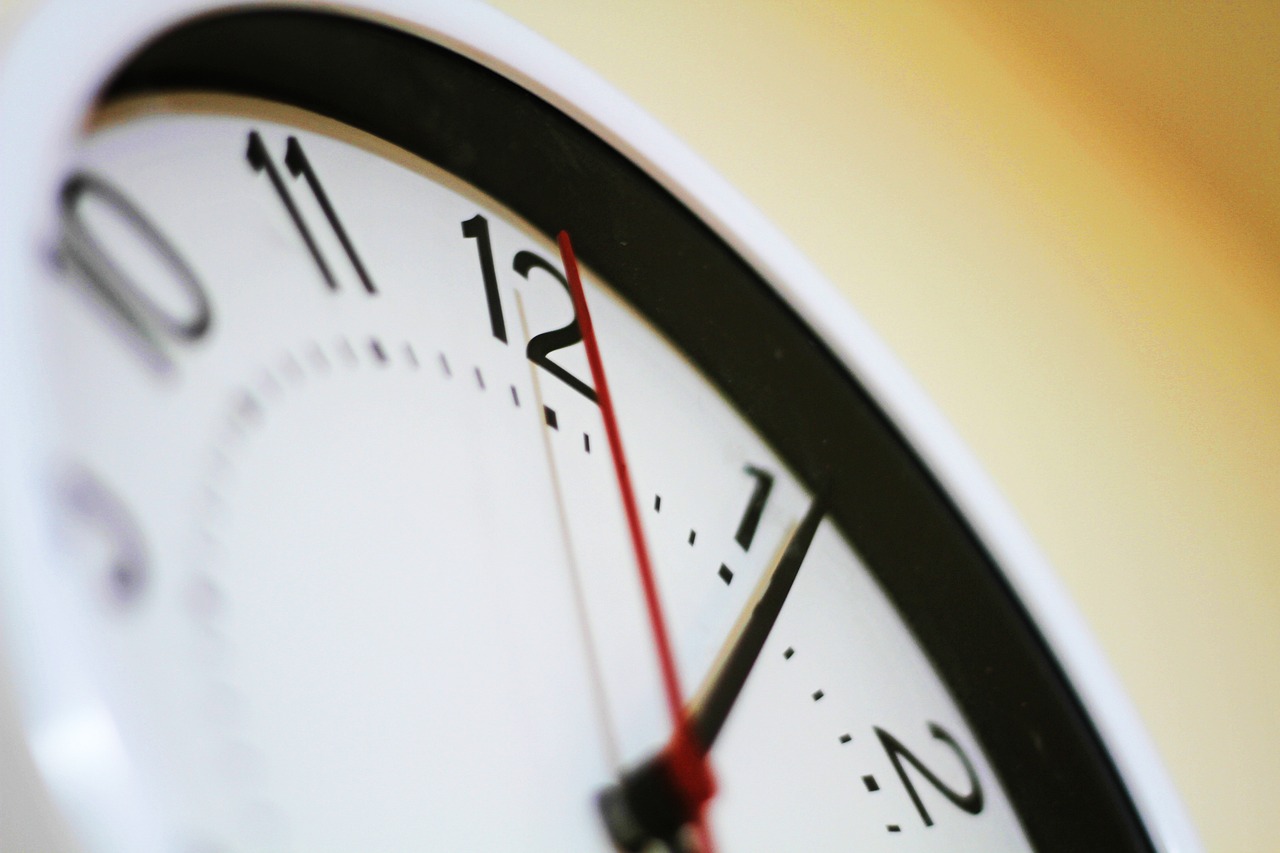
Establishing a Consistent Feeding Routine
Consistency is key when it comes to feeding your pet. Just like humans thrive on routine, our furry friends do too! Establishing a reliable feeding schedule not only helps in maintaining their health but also creates a sense of security for them. Imagine how unsettling it would be for you if your meals were served at random times; your pet feels the same way. By sticking to a consistent routine, you can help regulate their digestion and minimize any potential anxiety they may experience around mealtimes.
So, how do you create this magical feeding schedule? First, consider your pet's age, breed, and health status. For instance, puppies and kittens often require more frequent feedings compared to adult pets. A general guideline is to feed puppies three to four times a day until they are about six months old, while adult dogs typically thrive on two meals a day. Cats, on the other hand, usually do well with two meals a day as well, although some may prefer grazing throughout the day.
Next, think about the timing of each meal. It can be helpful to feed your pet at the same times every day. For example, you might choose to feed them breakfast at 8 AM and dinner at 6 PM. Keeping these times consistent reinforces the routine and helps your pet know when to expect their meals. Additionally, if you have a busy schedule, consider using a timer or an automatic feeder to ensure your pet gets their meals on time, even when you’re not around.
One thing to remember is that pets thrive on routine, but they also can be quite adaptable. If your pet seems hungry at unusual times or if you notice they’re waiting by their bowl earlier than usual, it might be time to adjust the feeding schedule slightly. Pay attention to their cues and make changes as needed. Flexibility is essential, especially if your pet's activity levels fluctuate or if they have specific health needs that require dietary adjustments.
When establishing a feeding routine, it's also important to consider the environment in which they eat. Create a calm and quiet space for your pet to enjoy their meals without distractions. This will not only make mealtime more enjoyable for them but also encourage them to eat at a steady pace, reducing the risk of digestive issues.
Lastly, don’t forget to monitor your pet's behavior and health after implementing the feeding schedule. Are they eagerly waiting for their meals? Are they maintaining a healthy weight? These are great indicators that your feeding routine is working well. If you notice any changes in their appetite or behavior, it might be time to reassess your approach.
- How often should I feed my pet? The frequency of feeding depends on your pet's age and health. Puppies and kittens may need 3-4 meals a day, while adult pets typically do well with 2 meals.
- Can I change my pet's feeding schedule? Yes, you can adjust your pet's feeding schedule based on their cues and health needs. Just ensure that any changes are gradual.
- What if my pet doesn't eat at the scheduled time? If your pet isn't eating at their usual time, it could indicate an issue. Monitor their behavior and consult a veterinarian if necessary.
Daily Feeding Frequency
Understanding how often to feed your pet is crucial for their overall health and well-being. Just like you wouldn't want to skip meals or eat at irregular times, your furry friend deserves a consistent feeding schedule to thrive. But how do you determine the right frequency? It largely depends on your pet's age, size, and health condition. For instance, puppies and kittens have different needs compared to adult or senior pets. Let's break it down:
For puppies and kittens, they typically require more frequent meals throughout the day. This is because they are growing and need a steady intake of nutrients to support their development. Generally, feeding them three to four times a day is recommended until they reach about six months of age. After that, you can gradually transition them to two to three meals a day.
On the other hand, adult pets usually do well with two meals a day. This routine not only helps regulate their metabolism but also keeps their energy levels stable throughout the day. However, some pet owners prefer to feed their adult pets just once a day. While this can work for some, it’s important to ensure that the portion size is adequate to meet their nutritional needs without overfeeding.
For senior pets, the feeding frequency may need to be adjusted again. As pets age, their digestive systems may not process food as efficiently, so splitting their daily intake into two to three smaller meals can be beneficial. This approach can help prevent digestive issues and keep their energy levels balanced.
Here’s a quick overview of feeding frequencies based on your pet's life stage:
| Life Stage | Feeding Frequency |
|---|---|
| Puppies | 3-4 times a day |
| Adult Dogs/Cats | 2 times a day |
| Senior Pets | 2-3 times a day |
It's also essential to consider your pet's unique needs. If your pet has any health conditions, such as diabetes or obesity, you might need to adjust the feeding frequency further. Consulting with your veterinarian can provide personalized guidance tailored to your pet’s specific situation.
In addition to frequency, the timing of meals plays a crucial role as well. Try to feed your pet at the same times each day. This consistency helps them establish a routine, which can reduce anxiety and improve their overall behavior. Picture it like this: just as you look forward to your meals, your pet will also anticipate their feeding times!
In conclusion, finding the right daily feeding frequency for your pet is a balance of understanding their age, health, and lifestyle. By paying close attention to these factors, you can create a feeding schedule that supports their optimal health and happiness.
- How do I know if I'm feeding my pet the right amount? - Monitor their weight and consult with your vet for guidance on portion sizes based on their specific needs.
- Can I change my pet's feeding schedule? - Yes, but do it gradually to avoid digestive upset. Always consult your vet if you're unsure.
- Is it okay to give my pet treats between meals? - Treats can be fine, but make sure they don't exceed 10% of your pet's daily caloric intake.
Adjusting the Schedule as Needed
Just like humans, pets can experience changes in their lifestyle that may require adjustments to their feeding schedule. Whether it’s a shift in activity levels due to seasonal changes, age, or even health conditions, being flexible with your pet's feeding routine is crucial for their overall well-being. Imagine trying to fit a square peg into a round hole—if your pet's needs change, sticking to a rigid feeding schedule might not only be inconvenient but could also lead to health issues.
For instance, if your furry friend has recently become more active—perhaps they’ve taken up running with you or have started playing more vigorously with other pets—it might be time to adjust their portion sizes or feeding frequency. On the flip side, if your pet has become less active due to age or medical conditions, you might need to reduce their food intake to prevent weight gain. It’s all about listening to your pet and adapting to their needs.
Here are a few scenarios that might necessitate a change in feeding routine:
- Increased Activity Levels: If your pet is exercising more, they may need additional calories to fuel their energy.
- Health Changes: A pet diagnosed with a health condition may require special diets or altered feeding schedules.
- Age Transitions: As pets grow older, their metabolism can slow down, necessitating smaller, more frequent meals.
To facilitate these adjustments, consider keeping a feeding journal. Record your pet's food intake, activity levels, and any noticeable changes in their weight or behavior. This can be a helpful tool in identifying patterns and making informed decisions about their feeding schedule.
Moreover, it’s always a good idea to consult with your veterinarian before making significant changes to your pet's diet or feeding routine. They can provide tailored advice based on your pet's specific health needs and lifestyle. Remember, a happy and healthy pet is a well-fed pet, and being adaptable in your approach can make all the difference!
- How often should I feed my pet? - The frequency largely depends on your pet's age, size, and health condition. Most adult pets do well with two meals a day, while puppies and kittens may require more frequent feedings.
- What should I do if my pet refuses to eat? - If your pet is not eating, it could be a sign of illness or stress. Consult your veterinarian if this persists for more than a day.
- Can I mix different types of pet food? - Yes, but it’s essential to do so gradually and ensure that the combined diet meets all nutritional needs.
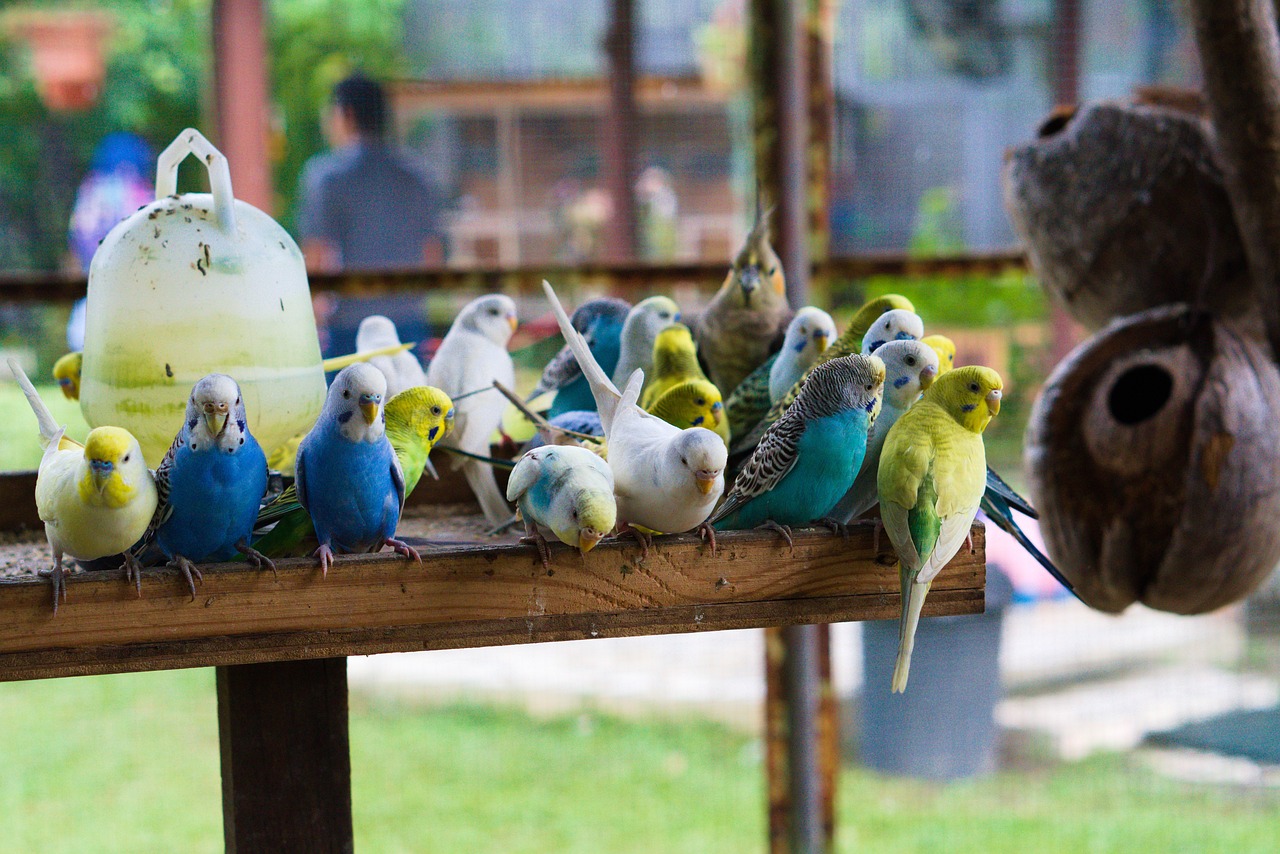
Monitoring Your Pet's Health
Once you've established a feeding schedule for your pet, it's crucial to keep a close eye on their health. Just like us, pets can experience changes in their well-being that may require adjustments in their diet or routine. Monitoring your pet's health is not just a good idea—it's essential for ensuring they live a long, happy life. So, what should you be looking out for? Here are some key areas to focus on.
First and foremost, weight management is vital. Keeping your pet at a healthy weight can prevent a myriad of health issues, including diabetes, heart disease, and joint problems. Regular weigh-ins can help you track any fluctuations. If you notice your furry friend gaining or losing weight unexpectedly, it might be time to reevaluate their feeding schedule or consult your veterinarian. A simple table can help you keep track of your pet’s weight over time:
| Date | Weight | Notes |
|---|---|---|
| 01/01/2023 | 10 lbs | Initial weight |
| 02/01/2023 | 10.5 lbs | Gained weight |
| 03/01/2023 | 10 lbs | Returned to initial weight |
Next, you should be on the lookout for recognizing dietary issues. Pets can develop food allergies or intolerances just like humans. Symptoms such as excessive scratching, gastrointestinal upset, or changes in behavior can be indicators that something in their diet isn't sitting right. If you notice these signs, it may be time to consult with your vet to identify the offending ingredient. You might consider switching to a limited-ingredient diet or trying a different protein source. Also, be aware of common allergens, such as:
- Beef
- Dairy
- Wheat
- Chicken
- Fish
Another important aspect of monitoring your pet’s health is observing their overall behavior and energy levels. If your pet seems lethargic, irritable, or less interested in playtime, it could be a sign that their current diet isn't meeting their nutritional needs. Regular check-ins on their mood and energy can help you catch any potential issues early on.
Lastly, don’t forget about hydration! Ensuring your pet has access to fresh water is just as important as their food. Dehydration can lead to serious health problems, so keep an eye on their drinking habits. If you notice that your pet is drinking significantly more or less than usual, it may warrant a trip to the vet.
In conclusion, monitoring your pet's health is an ongoing process that requires attention and care. Regular weigh-ins, being vigilant about dietary issues, observing behavior changes, and ensuring proper hydration can go a long way in keeping your furry friend healthy and happy. Remember, a little proactive care can prevent larger issues down the road!
Q: How often should I weigh my pet?
A: It's generally a good idea to weigh your pet once a month. However, if you notice any significant changes in their appearance or behavior, you should weigh them more frequently.
Q: What are the signs of food allergies in pets?
A: Common signs include itching, gastrointestinal upset, and changes in behavior. If you suspect your pet has a food allergy, consult your vet.
Q: How can I ensure my pet is getting enough water?
A: Always provide fresh water and monitor their drinking habits. If you notice any drastic changes, consult your veterinarian.
Weight Management
Maintaining a healthy weight is vital for your pet's overall well-being. Just like humans, pets can struggle with weight issues, which can lead to serious health problems such as diabetes, joint issues, and heart disease. So, how do you ensure your furry friend stays fit and fabulous? It all starts with understanding their unique needs and making informed choices about their diet and exercise.
The first step in effective weight management is to monitor your pet's weight regularly. This can be done through weekly weigh-ins at home or by visiting your veterinarian for more accurate measurements. Keep in mind that pets can gain or lose weight for various reasons, including changes in activity levels, diet, or health conditions. If you notice a significant change in your pet's weight, it’s essential to consult your vet.
Next, let’s talk about portion control. Many pet owners underestimate the amount of food their pets actually need. It’s crucial to follow the feeding guidelines provided on your pet food packaging, which usually take into account your pet's weight, age, and activity level. For instance, a sedentary cat may only need about 200 calories a day, while an active dog may require upwards of 800 calories. Here’s a simple table to illustrate typical caloric needs based on pet size:
| Pet Size | Caloric Needs (per day) |
|---|---|
| Small (up to 10 lbs) | 200-300 calories |
| Medium (11-25 lbs) | 300-600 calories |
| Large (26-50 lbs) | 600-1200 calories |
| Giant (over 50 lbs) | 1200+ calories |
In addition to monitoring portions, it's essential to incorporate regular exercise into your pet's routine. Just like us, pets need physical activity to burn off excess calories and maintain muscle mass. Try to engage your pet in at least 30 minutes of exercise each day. This could be as simple as a brisk walk, a game of fetch, or even interactive playtime with toys. Remember, the more fun you make it, the more likely your pet will look forward to their exercise time!
Lastly, be aware of treats. While it's tempting to spoil your pet with goodies, treats can add up quickly in terms of calories. Aim to limit treats to no more than 10% of your pet's daily caloric intake. Instead of store-bought treats, consider healthier options like baby carrots or apple slices (without seeds) as alternatives. These can satisfy your pet's cravings without the extra calories.
In conclusion, managing your pet's weight requires a combination of monitoring their diet, controlling portion sizes, ensuring regular exercise, and being mindful of treats. By taking these steps, you’ll not only help your pet maintain a healthy weight but also enhance their quality of life, making them happier and more energetic companions.
- How often should I weigh my pet? It's a good idea to weigh your pet weekly or bi-weekly to track any significant changes.
- What should I do if my pet is overweight? Consult your veterinarian for a tailored weight loss plan that includes dietary changes and increased exercise.
- Are there specific foods that help with weight management? Yes, many brands offer low-calorie or weight management formulas designed to help pets lose weight safely.
- Can I give my pet human food as treats? Some human foods are safe, but always check with your vet first, as some can be harmful.
Recognizing Dietary Issues
As a responsible pet owner, it's crucial to be vigilant about your furry friend's health, especially when it comes to their diet. Dietary issues can sneak up on you, often manifesting in subtle ways that may be easy to overlook. Being proactive in recognizing these signs can make a significant difference in your pet's overall well-being. So, what should you be on the lookout for? Here are some common indicators that your pet might be experiencing dietary problems:
- Changes in Appetite: If your pet suddenly becomes disinterested in their food or, conversely, seems to be ravenously hungry all the time, it could signal a dietary issue. A sudden change in appetite can be a red flag.
- Digestive Disturbances: Watch for signs of gastrointestinal distress, such as vomiting, diarrhea, or constipation. These symptoms can indicate food intolerances or allergies that need to be addressed.
- Skin and Coat Problems: A dull coat, excessive shedding, or skin irritations can be linked to nutritional deficiencies or allergies. If your pet's skin starts to appear flaky or inflamed, it might be time to reassess their diet.
- Weight Fluctuations: Unexplained weight gain or loss can be a sign of an improper diet. It's essential to monitor your pet's weight consistently and consult your veterinarian if you notice significant changes.
Sometimes, dietary issues can be more complex, involving allergies or intolerances to specific ingredients. For instance, many pets are sensitive to common proteins like chicken or beef, or even grains like wheat and corn. If you suspect that your pet has a food allergy, it may be beneficial to conduct a food elimination trial under the guidance of your veterinarian. This process involves removing potential allergens from their diet and gradually reintroducing them to identify the culprit.
Additionally, keep in mind that older pets may have different dietary needs compared to younger ones. Age-related health issues can also influence how your pet reacts to their food. For example, a senior dog might develop sensitivities to certain ingredients that they previously tolerated without issues. Regular check-ups with your veterinarian can help you stay ahead of these changes and adjust your pet's diet accordingly.
In conclusion, recognizing dietary issues in your pet is a vital part of their health care. By being attentive to changes in their behavior and physical condition, you can take proactive steps to address any potential problems. Remember, your pet relies on you to provide them with a balanced and nutritious diet, so staying informed and observant is key!
Q: How can I tell if my pet has a food allergy?
A: Look for symptoms such as itching, gastrointestinal upset, or changes in weight. It's best to consult with your veterinarian for proper diagnosis and treatment.
Q: Should I switch my pet's food if they have dietary issues?
A: If you suspect dietary issues, consult your veterinarian before making any changes. They can recommend the best course of action, including potential food trials.
Q: How often should I monitor my pet's weight?
A: It's recommended to check your pet's weight monthly, but more frequent checks may be necessary if they are on a weight management plan or if you notice changes in their eating habits.
Frequently Asked Questions
- What factors should I consider when creating a feeding schedule for my pet?
When designing a feeding schedule, consider your pet's age, breed, weight, activity level, and any specific health issues they may have. Each of these factors plays a crucial role in determining how much and how often you should feed your pet to ensure they stay healthy and happy.
- How do I choose the right type of food for my pet?
Choosing the right food depends on your pet's unique nutritional needs. You can opt for dry, wet, or raw food, but it's essential to read labels and consult your veterinarian to find a high-quality option that meets your pet's requirements.
- What are the benefits of commercial pet food compared to homemade diets?
Commercial pet foods are formulated to meet specific nutritional standards, offering convenience and consistency. On the other hand, homemade diets allow you to control ingredients and cater to your pet’s specific dietary needs, but they require more effort to ensure balanced nutrition.
- How can I determine the right portion sizes for my pet?
To calculate the right portion sizes, consider your pet's weight and activity level. Many pet food packages provide guidelines based on these factors, but consulting your veterinarian can help tailor the portions to your pet's individual needs.
- Why is a consistent feeding routine important for my pet?
A consistent feeding routine helps regulate your pet's digestion and metabolism, making it easier to monitor their health. It also creates a sense of security for your pet, knowing when to expect their meals.
- How often should I feed my pet?
The frequency of feeding depends on your pet's age and health. Puppies and kittens usually require more frequent meals, while adult pets can typically thrive on two meals a day. Always consult your vet for personalized recommendations.
- What should I do if I need to adjust my pet's feeding schedule?
If you need to make adjustments, consider changes in your pet's activity levels, health, or weight. Gradually transition to the new schedule to avoid digestive upset and monitor your pet's response to the changes.
- How can I monitor my pet's health after establishing a feeding schedule?
Keep an eye on your pet’s weight, energy levels, and overall behavior. Look for signs of discomfort or changes in appetite, as these can indicate dietary issues or health problems that may need addressing.
- What are some signs of dietary issues in pets?
Common signs of dietary issues include excessive scratching, gastrointestinal upset, or changes in weight. If you notice any of these symptoms, consult your veterinarian to determine if your pet might have food allergies or intolerances.


